Hey, it’s Austris again! Half Dome is considered one of the most iconic peaks in North America. Its striking sheer face and dome shape make it Yosemite’s most distinctive landmark and a legendary goal for hikers and climbers worldwide.
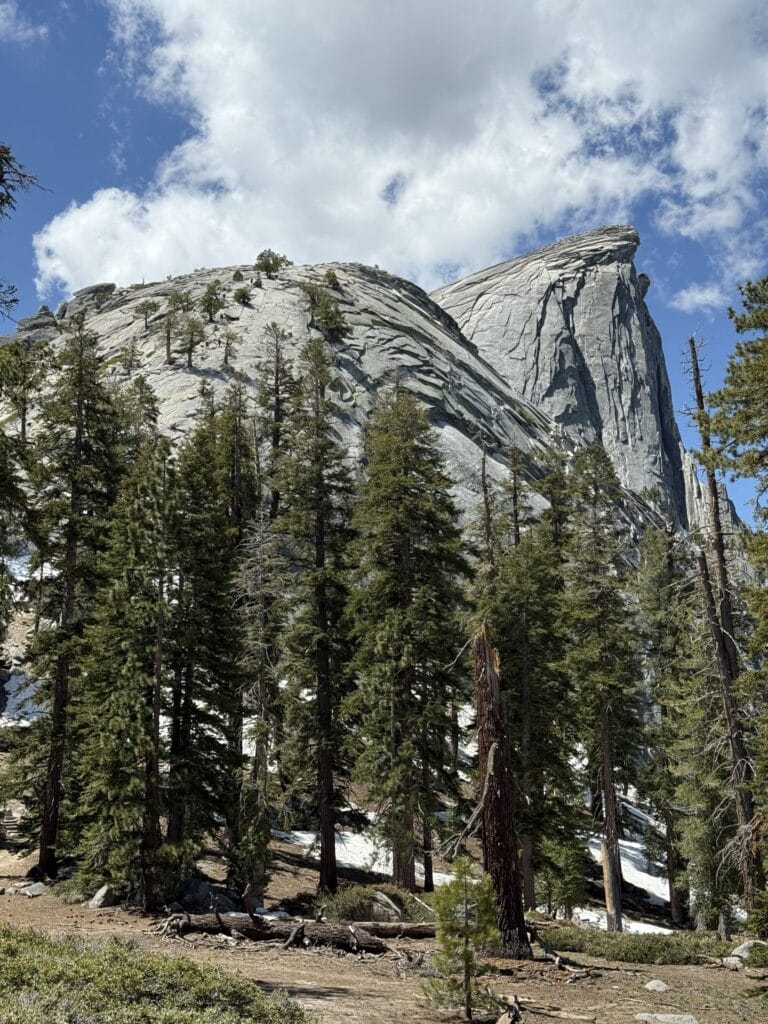
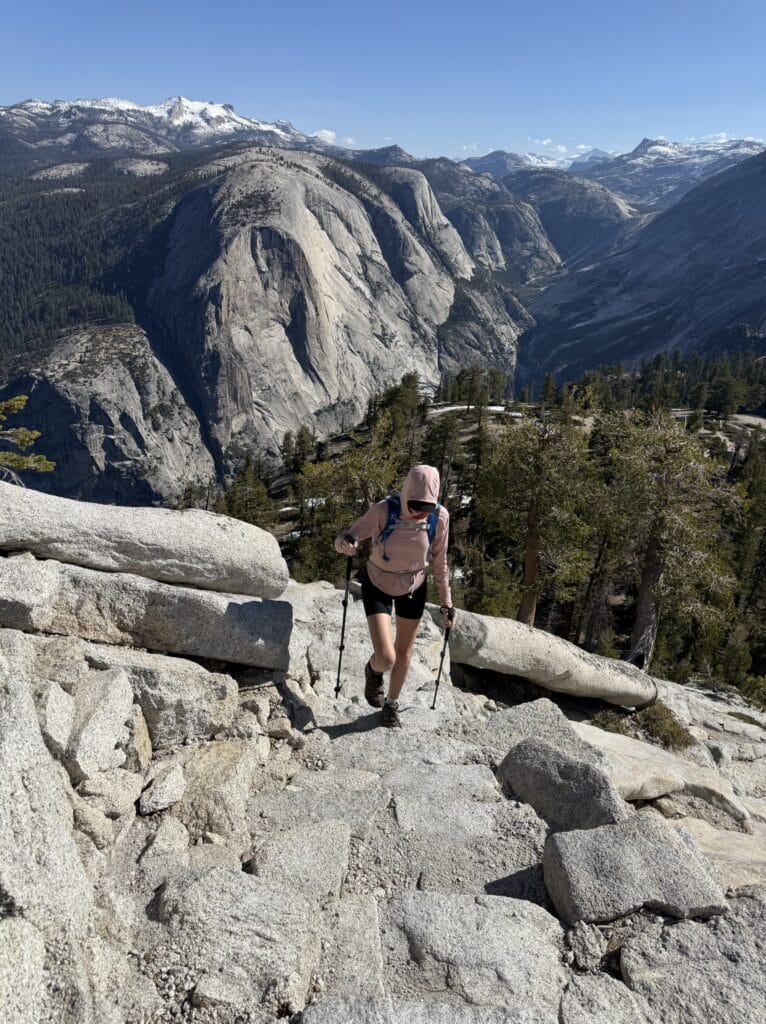
As someone from Europe, I have to say that permits and seasonal access to nature can be quite frustrating. I understand that these measures are intended to address the growing demand for outdoor exploration. However, one unexpected benefit is the ability to access these locations during the off-season when there are few, if any, people around.
Hiking off-season not only provides fewer crowds but also presents unique scenery and added challenges, creating a well-rounded adventure.
Why hike Yosemite Half Dome off-season?
There are both pros and cons of hiking the Half Dome off-season. As fun and adventurous as it might sound, there are a few considerations that add complexities to the outing.
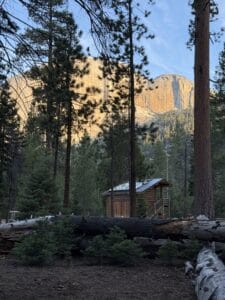
Pros
- Ability to avoid crowds
- No need to acquire a permit
- Unique weather conditions – massive waterfalls, snow-capped peaks
- More adventurous ascent for the top part
Cons
- More logistics are involved, and additional gear is needed
- More challenging terrain – parts of the trail can be snowy
- More challenging infrastructure – the wooden steps are removed, and cables are put down on the last bit of the hike
- Uncertainty with weather – early spring can still have the last part of the hike covered in snow/ice
Half Dome cables and permits
The last 120 vertical meters (or 400 feet for all freedom-units using readers) of the hike have metal cables installed, aiding hikers with the ascent.
There are two states of cables – “up” and “down”. There is this article from Yosemite National Park in more depth about the Half Dome cables, but here is the short of it:
Cables being “up” means that they are propped up on poles with wooden boards placed between them, creating handrails and footholds, making the final steep section a tough hike, not a climb.
When the cables are “down”, the poles and boards are removed, and the cables lie flat against the rock.
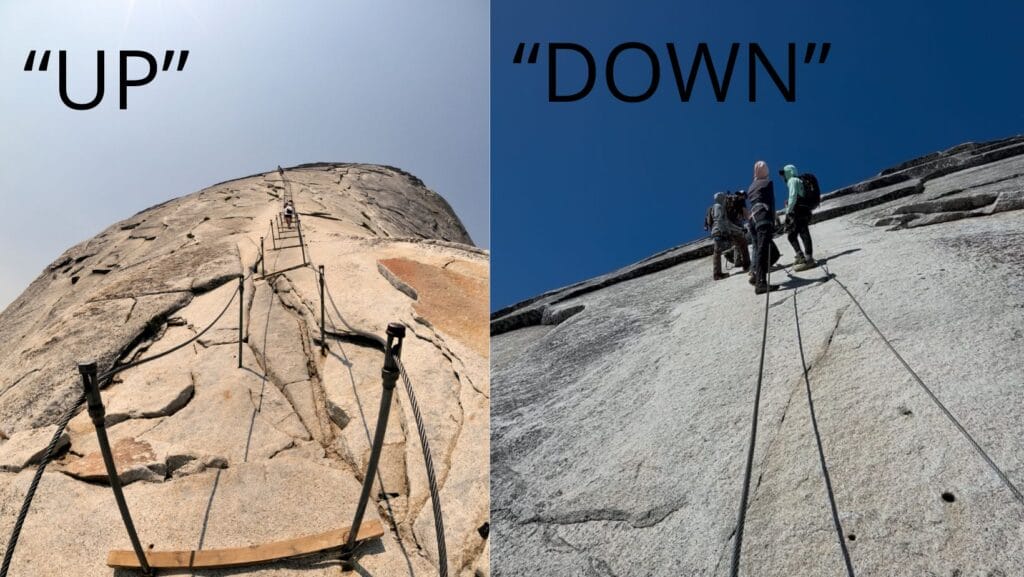
The cables are typically up from late May to mid-October, and that’s when permits are needed. Outside these months, the cables are down, and no permit is needed. The best shot at good weather, without snow or ice, is usually in the 2–4 weeks before and after the cables go up. That’s our window of opportunity and time frame, I’m intending this guide to be aimed at.
Getting to the Half Dome hike and parking
Generally, it’s easy to get to Yosemite, double-check road conditions in the Yosemite Road Status page here beforehand and also on the day of the drive (things might change due to unexpected weather).
When it comes to parking, there are a few options. The easiest is Curry Village Parking Lots, and there is also the Yosemite Valley Trailhead Parking, which is a bit closer, but I’ve experienced occasional road closures there.
If you’re looking to stay in Curry Village, check out this option on Booking.
There are other parking lots in the valley with free shuttles taking you all around the park.
Trail maps and route planning
For the first half of the hike, there are two options – The Mist Trail and the John Muir Trail (JMT). I suggest taking one on the way in and the other on the way out. Remember – the Mist Trail gets extremely misty and moist in May – not a big deal, clothes usually dry in an hour or two.
Here is a GPX of the route I took – AllTrails map (click here to download). It follows the Mist Trail going towards the Half Dome and comes back via the JMT. I suggest downloading the trail or having some other offline navigation medium, for example, a physical map. All the trails are well marked, and in good weather conditions/visibility, it’s a piece of cake to navigate just using the trail signs.
During the off-season, spring and fall, it’s important to know that parts of the trails can be covered in snow and ice. Especially for the last push up the Half Dome – if it’s snow-covered or icy, I suggest turning around. “Reaching the summit is optional. Getting down is mandatory.” – Ed Viesturs.
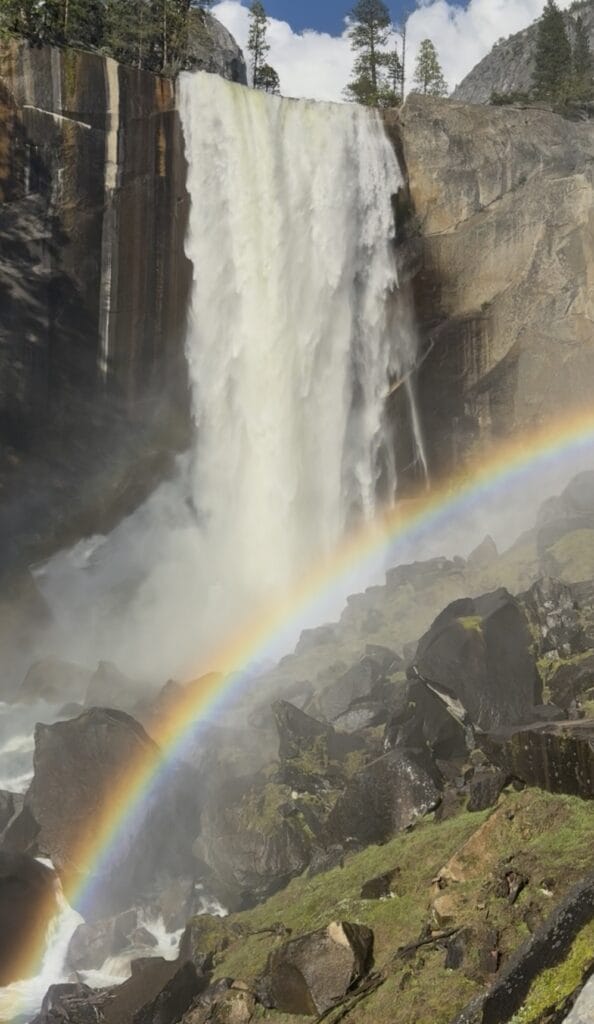
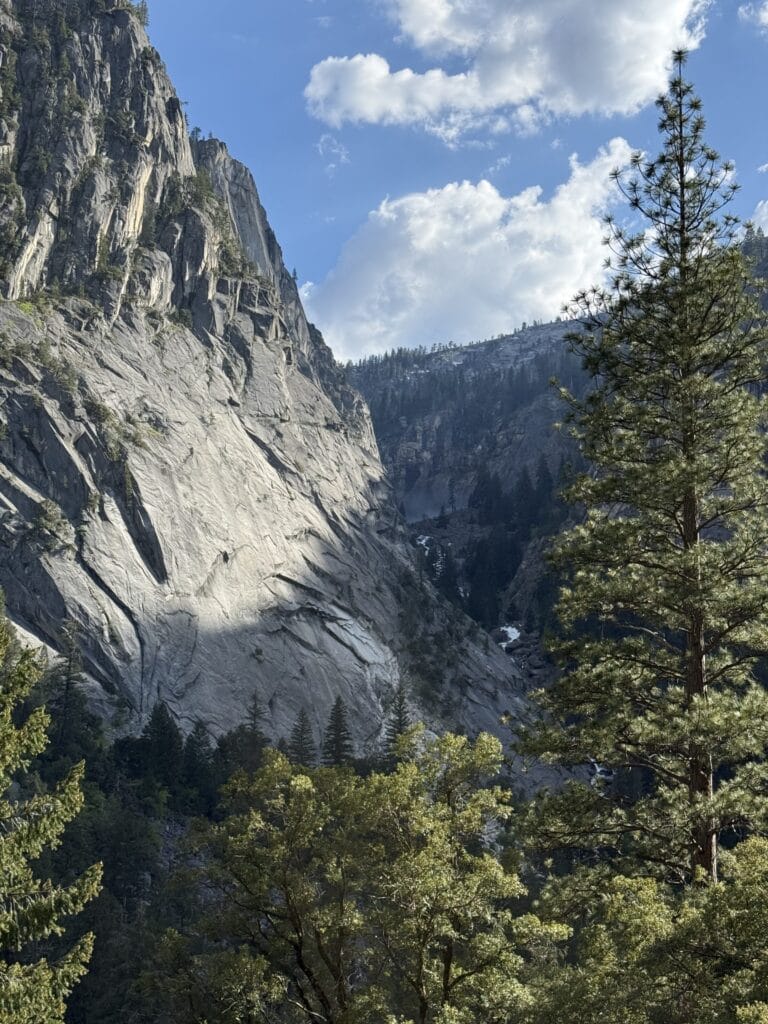
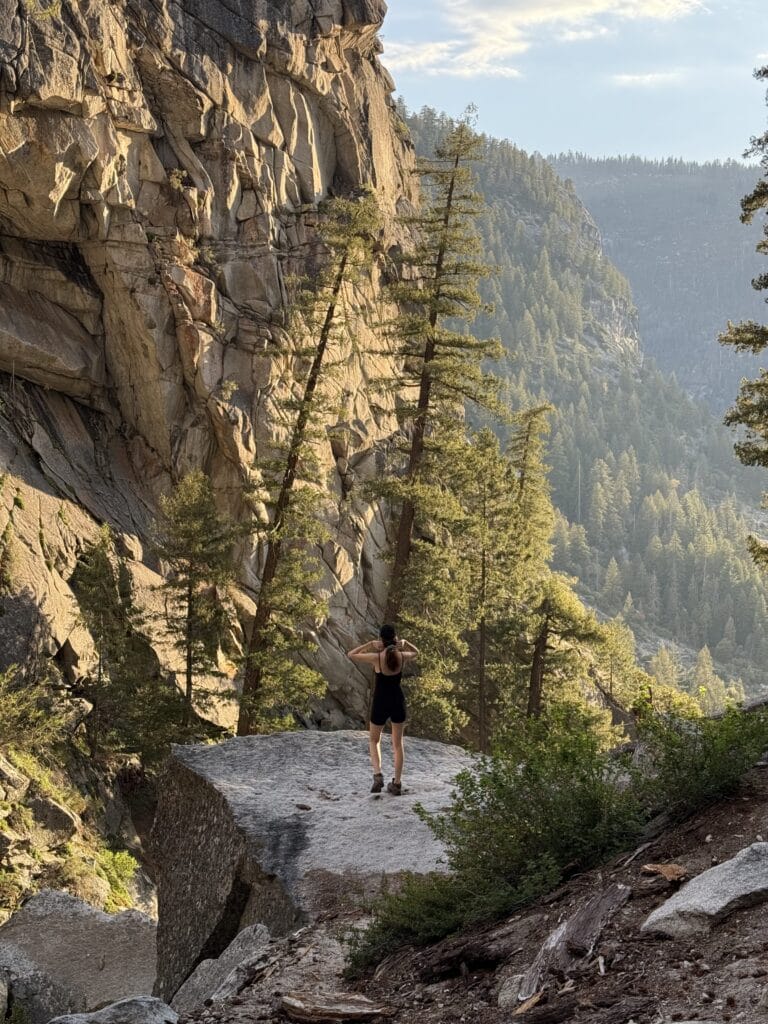
Gear and what to have with you on Half Dome
Now we’re getting to the fun part of the ascent. Right after the Sub Dome – rocky shoulder or “hump” right before the last Half Dome last push is where you see the cables. Technically, up until here, you can hike without a permit, also in the season.
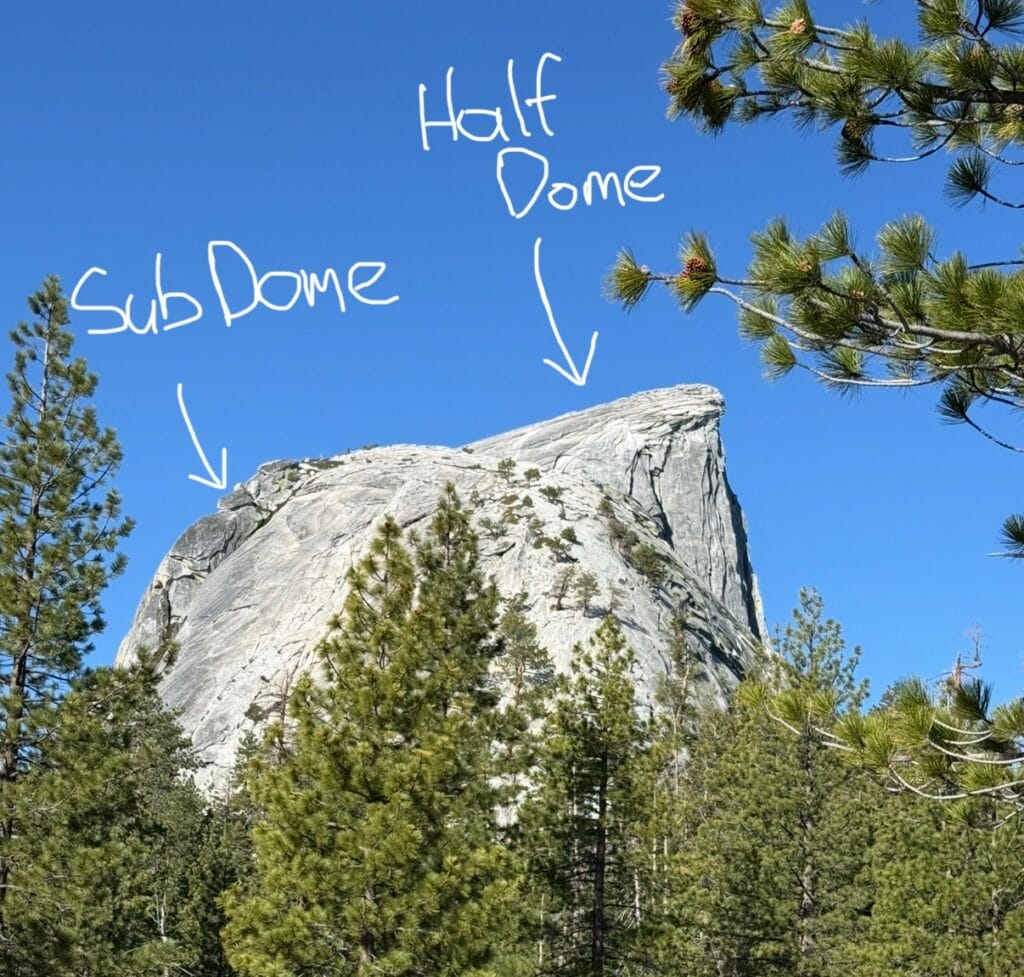
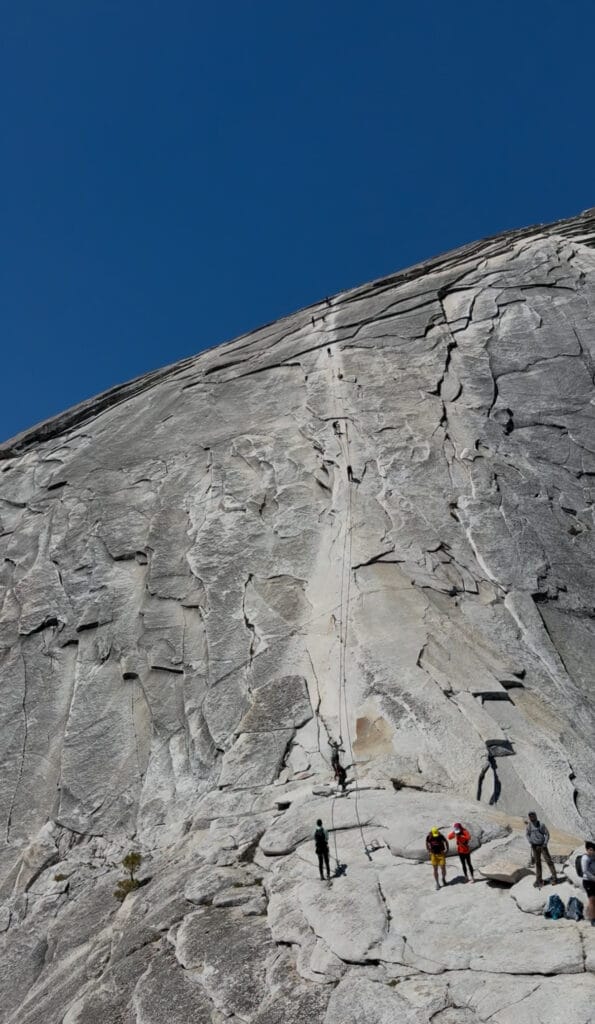
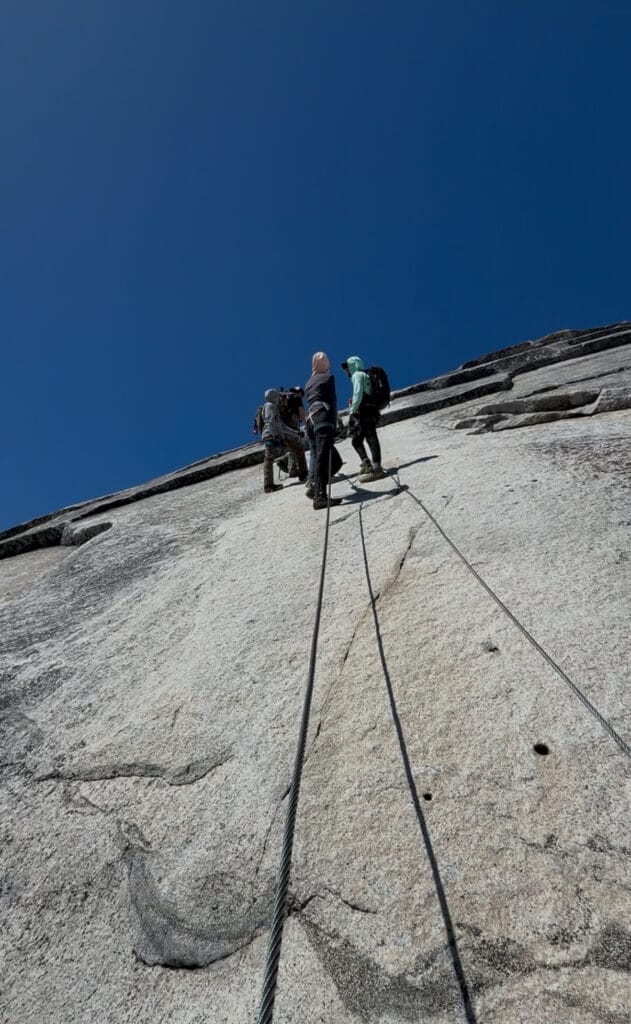
When you get to the cables (the middle picture above), it’s the last push till the summit. It might look easy, and someone with sure footing and extensive experience could just run up, but here’s a list of gear I suggest to make this last part both safe and enjoyable.
Half Dome ascent gear list
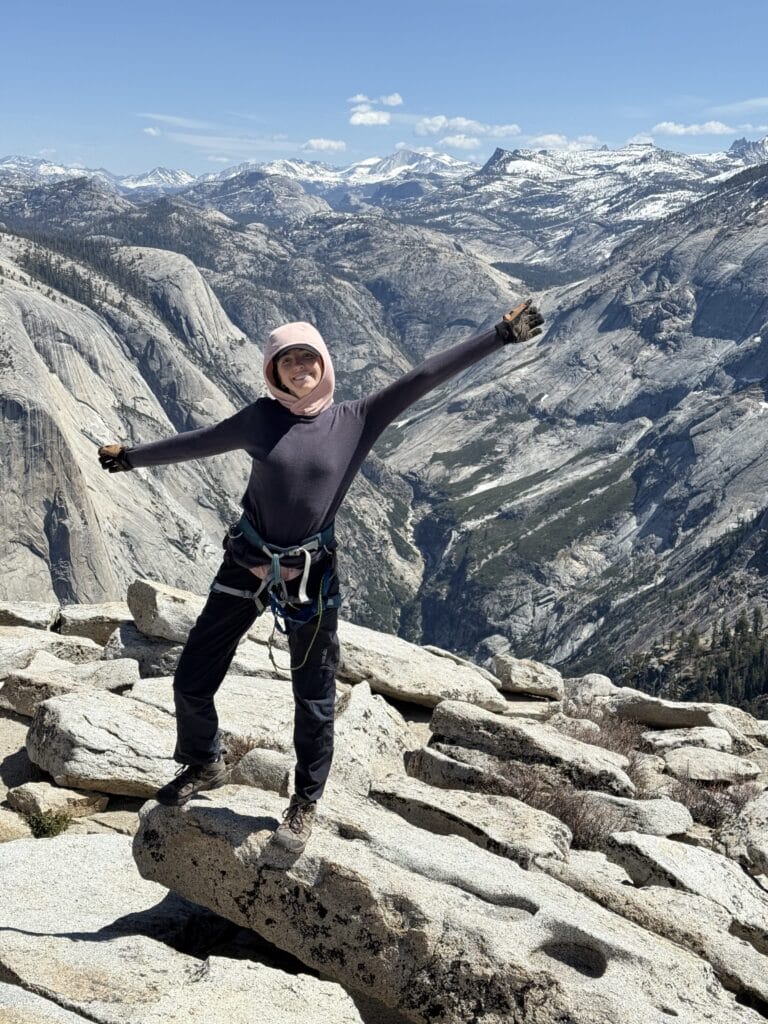
- Tight hiking shoes with a good grip. My favourites are La Sportiva shoes – TX5 Low or Boulder X
- Pair of leather gloves – any will do
- Climbing harness – any will do
- Prussik cord – if you’re a climber, you’ll have some. If you don’t know what this is, a good start is Sterling HollowBlock or Beal Jammy
- Personal Anchor System (PAS) – many options here, but I suggest Petzl Connect Adjust
- Two locking carabiners (one for prusik cord, the other for the PAS). The one for PAS ideally with a large opening, something like Petzl William
For regular hiking gear, it depends on your personal preference, but this is what I suggest
- Light backpack – Black Diamond Distance 15 is my favourite
- Pair of hiking poles
- Water bladder with a 2-3 litre capacity
- Sun protective clothing – Black Diamond Alpenglow hoodie is my favourite
- Sunglasses – I like Julbo Reactiv ones
- A cap or a brimmed hat
- Snacks to fuel the day
- Headlamp – it weighs close to nothing ,and with long days it’s always smart to have one
When it comes to the technique of ascending the cables, this is what I suggest. Bear in mind that I’m not a certified guide, take this information with a pinch of salt and do your own research.
- Attach the prusik cord to the metal cable using the Autoblock hitch
- Attach the PAS to the cable and let it dangle below your prusik cord (as a catastrophe back-up)
- When you get to a place where the cable is attached to the rock
- Remove and re-attach your PAS above the cable attachment point
- After your PAS is re-attached, remove and tie in the prusik cord using autoblock hitch again above the cable attachment point
- Repeat steps until you get to the top
- Going down, I follow the same system. Only difference – when I get to the connection point, I first remove the prusik (the PAS still attached), reach it below and then move down the PAS
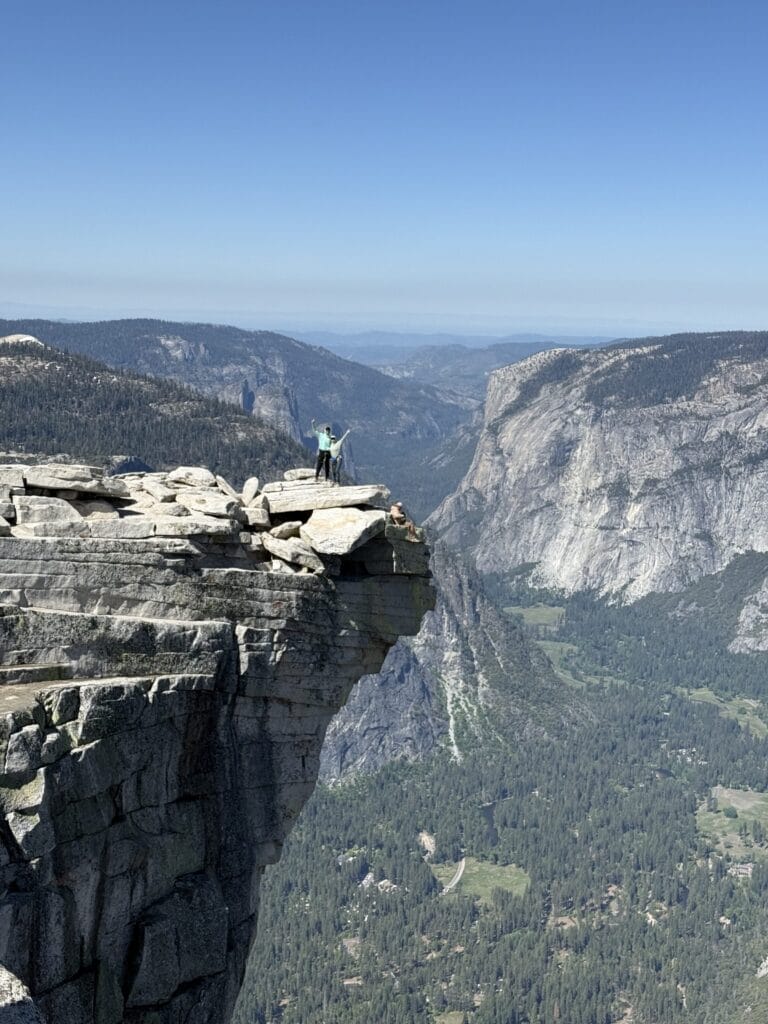
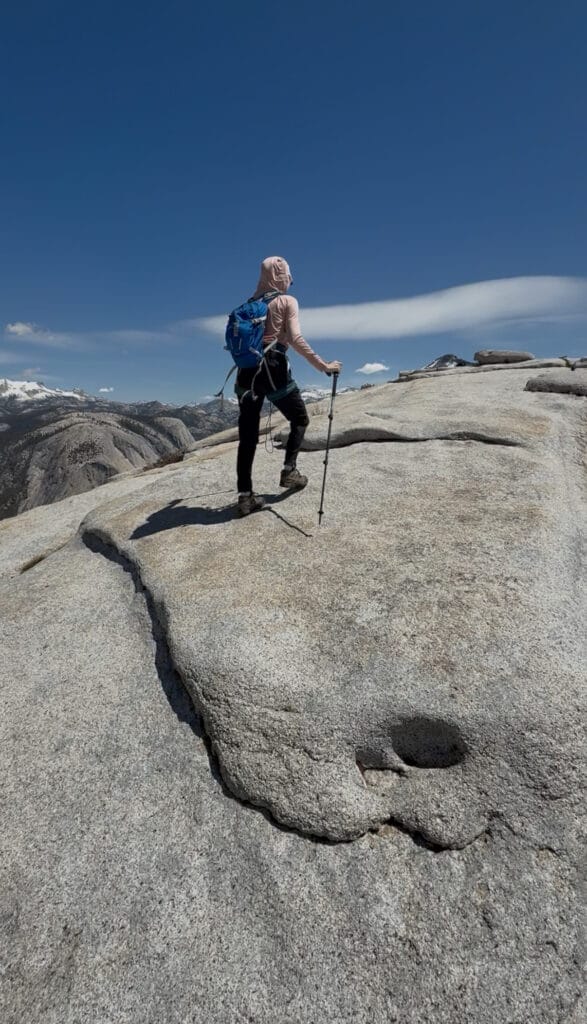
Logistics and timing
The best off-season timing is 1-2 weeks before when Half Dome cables go up and a few weeks after they go down. It all depends on the weather, mostly the amount of snow and ice at the top. The trip I did was in early May, and I couldn’t suggest that time more – spectacular waterfalls, warm yet fresh temperature and few to know people on the way up.
For fit individuals, I would say 10 hours is plenty of time, but the estimates vary depending on your skill and fitness levels.
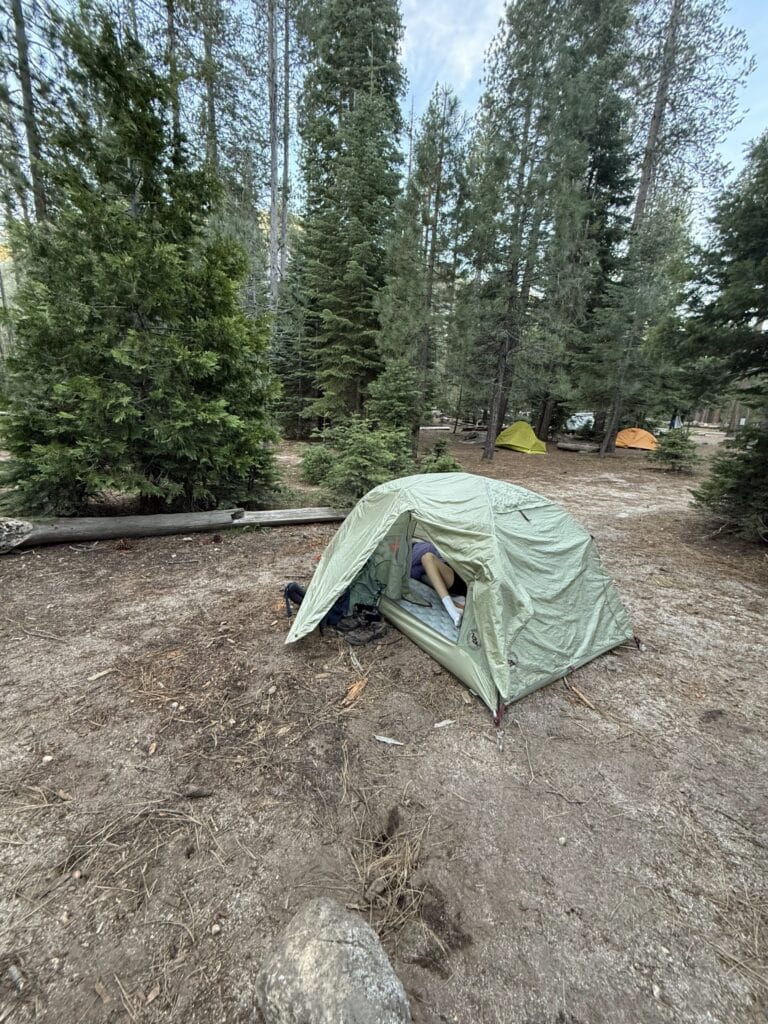
The classic itinerary is for a day push – start early in the dark, get back down before sunset (depends on individual capabilities), but a two-day ascent can make for a more relaxed adventure. The most logical hike split is the Little Yosemit Valley campground – it has all the necessary infrastructure – bear lockers, a nearby river for water access.
The best and easiest way to stay in the valley is actually via Wilderness Permits. Those are available seven days in advance (up to three days in advance). Once acquired, you can hike up, spend a night in the tent and go for the Half Dome summit push fresh, early in the morning, also potentially beating a few others. Moreover, you can align this with a full moon and go for a midnight ascent for a truly unique experience. And yes, the tent can stay up during the day when you hike, we left ours there with all of our camping stuff in it.
In summary, I was a little overwhelmed by limitations, permits and seemingly artificial seasonality for outdoor adventures in the US. But with a little creativity, those limitations might have opened a door for off-season explorations. I encourage you to seek some off-season adventures, plan for the worst, hope for the best and respect nature. Catch you all out there!
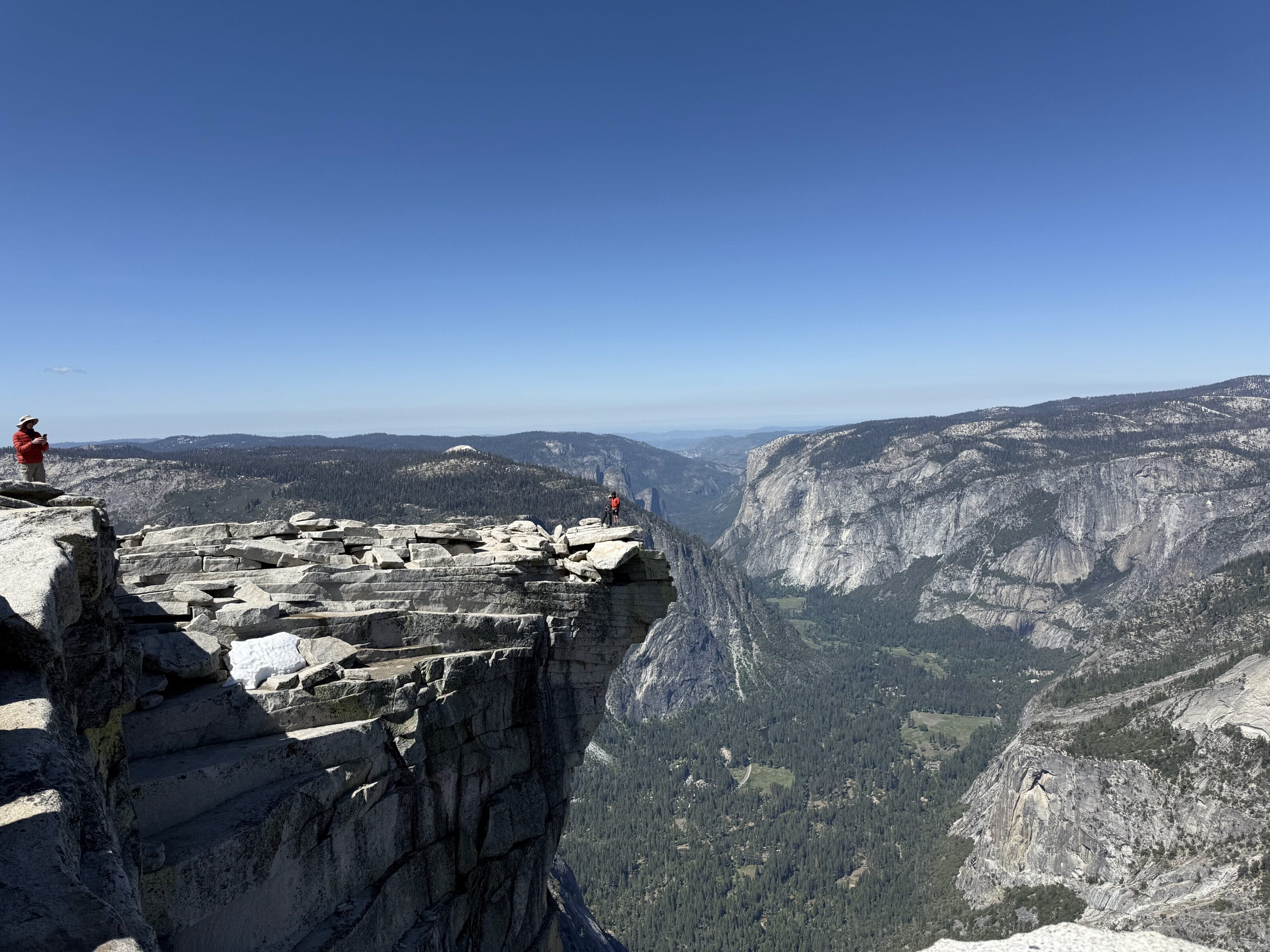
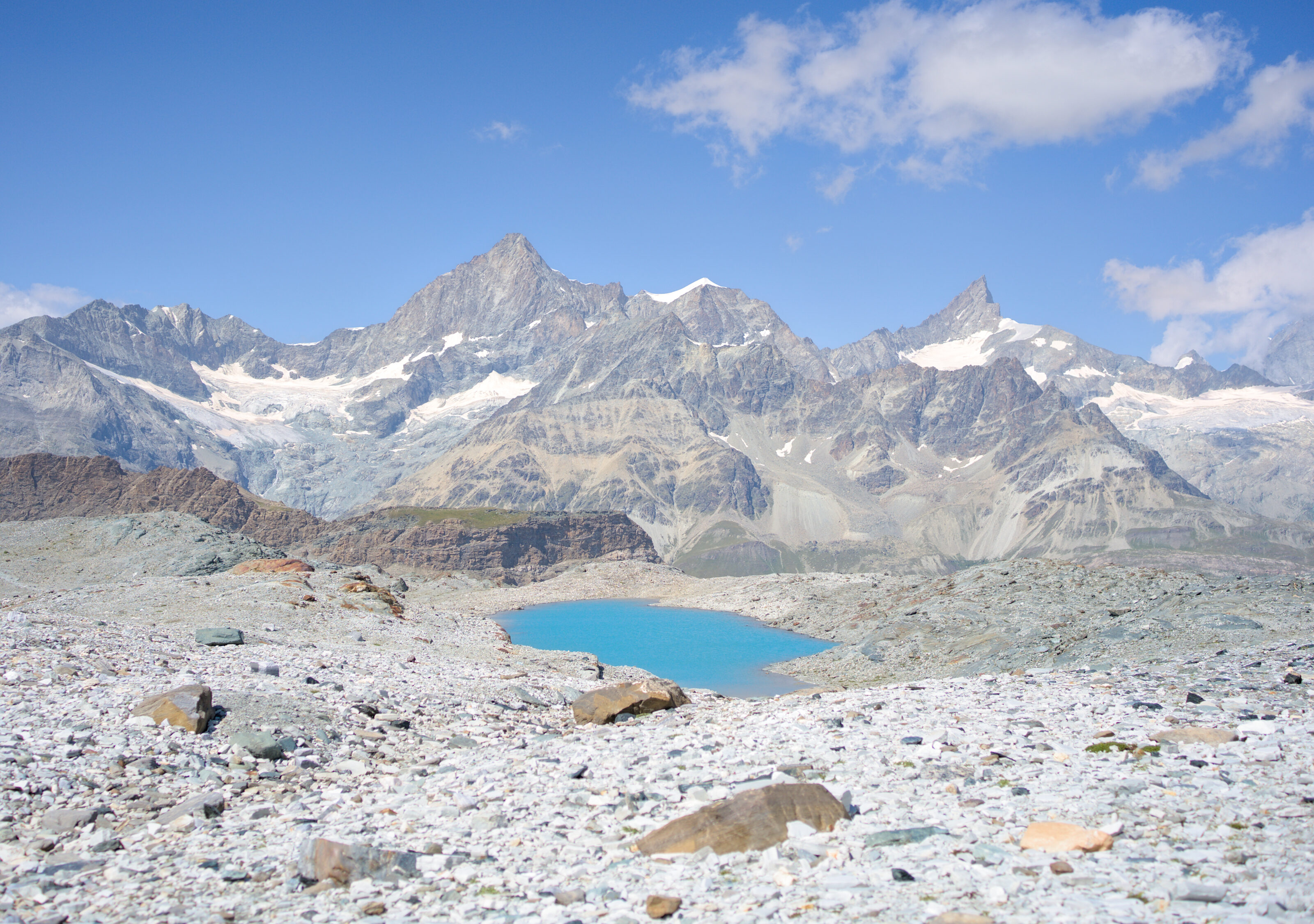
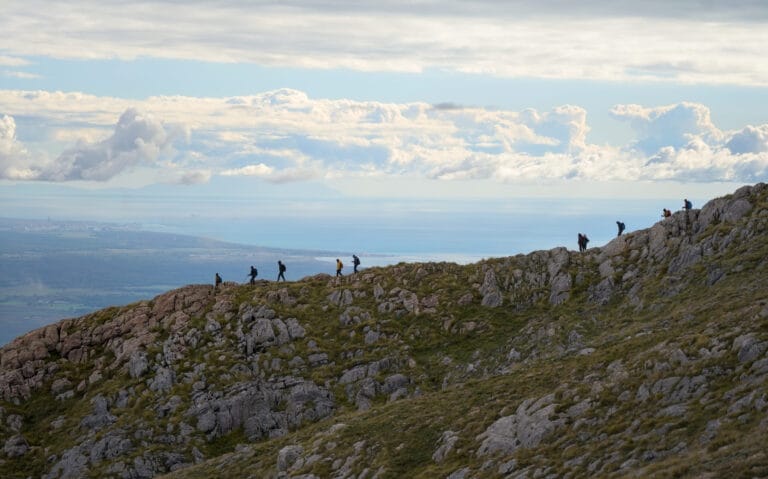
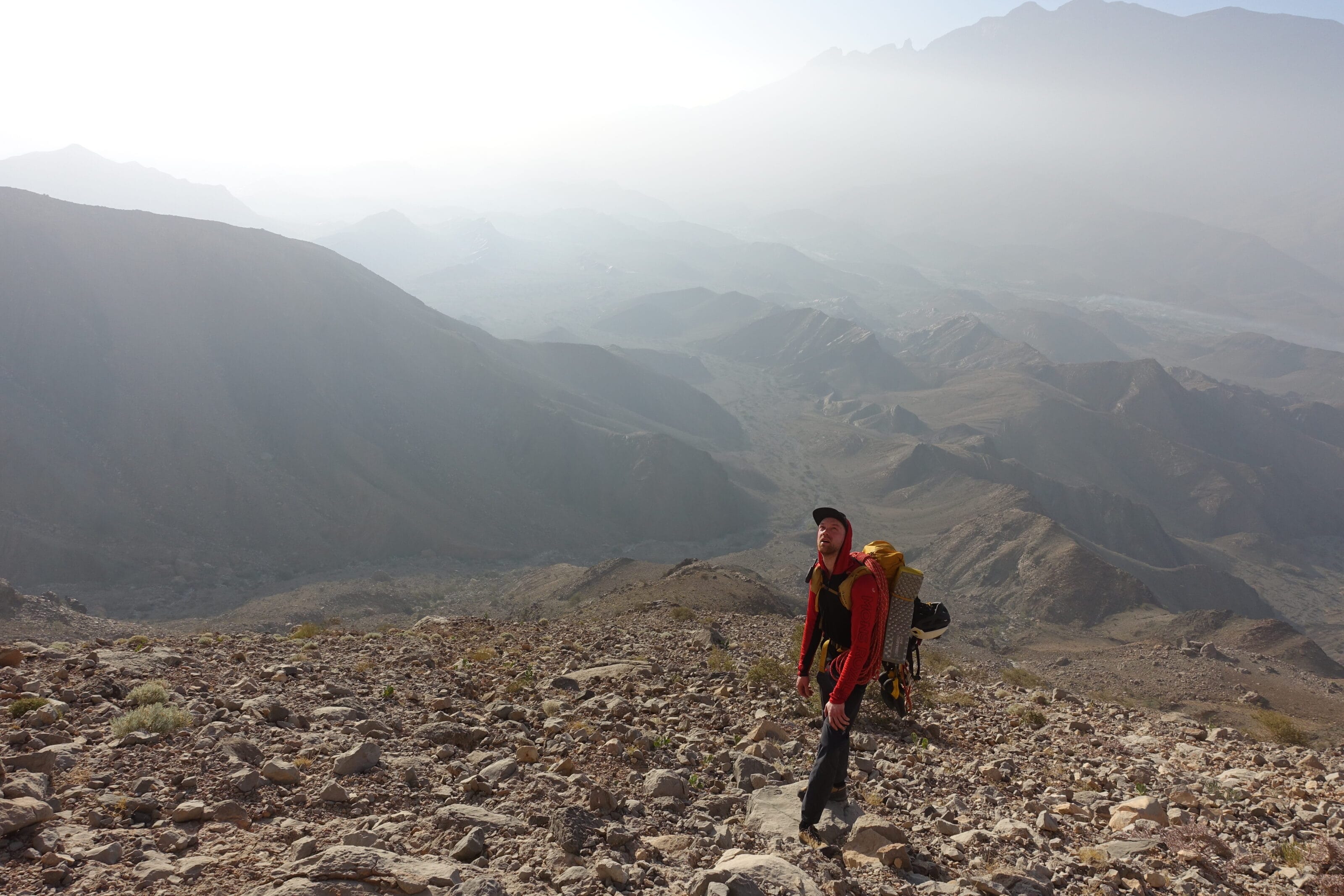
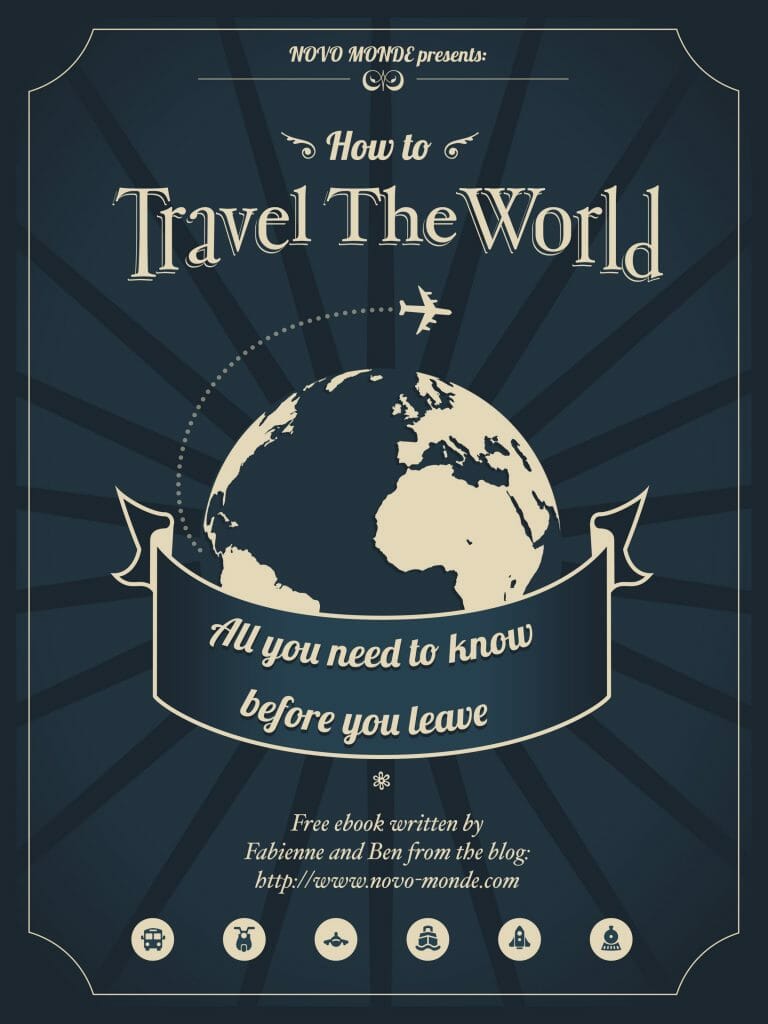

Join the discussion